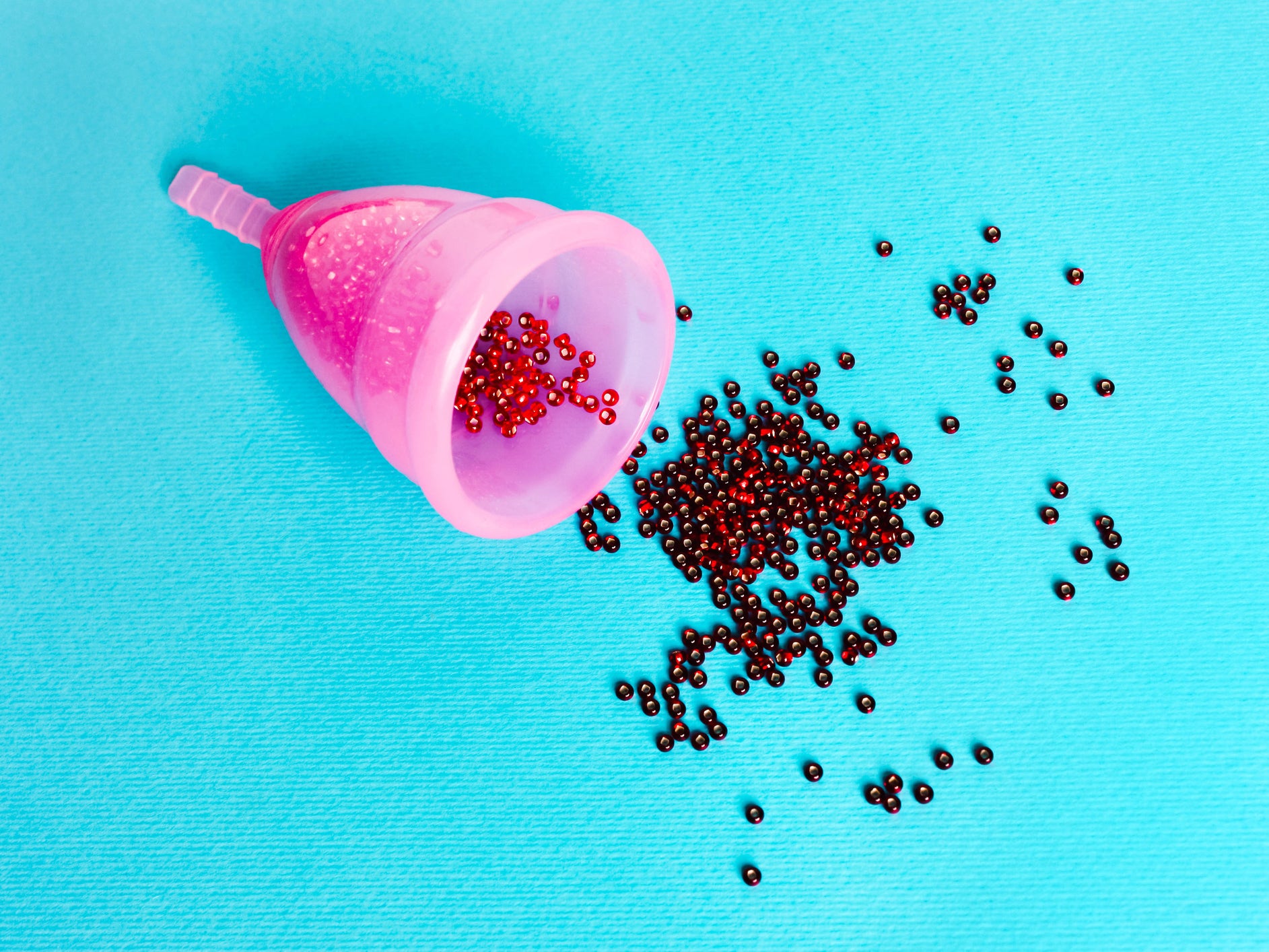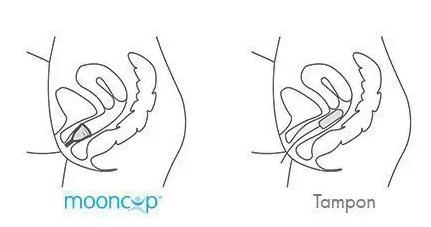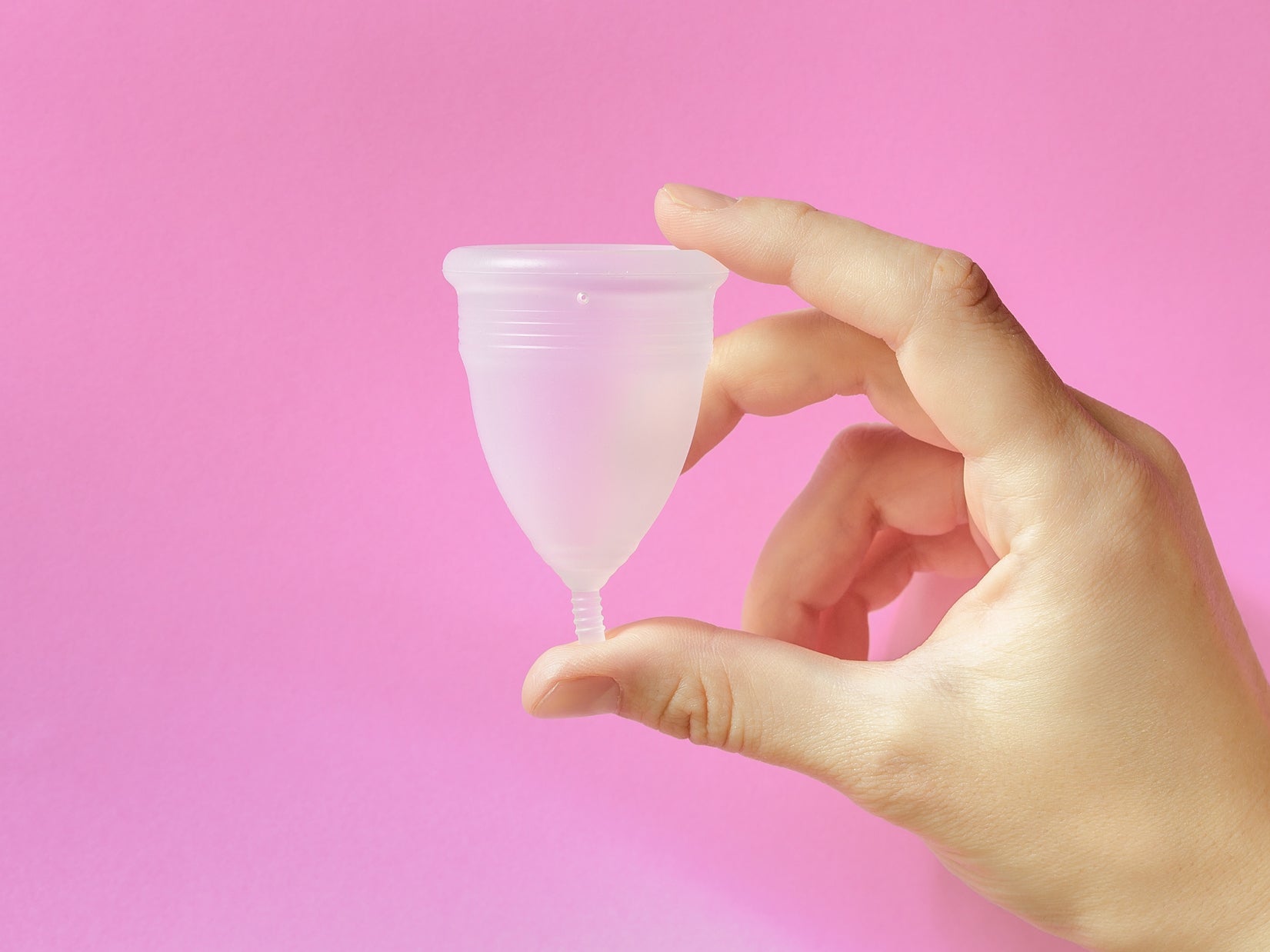The Independent's journalism is supported by our readers. When you purchase through links on our site, we may earn commission.
How to use a menstrual cup, according to experts
'It's completely natural to feel unsure about even the idea of a menstrual cup'

Your support helps us to tell the story
From reproductive rights to climate change to Big Tech, The Independent is on the ground when the story is developing. Whether it's investigating the financials of Elon Musk's pro-Trump PAC or producing our latest documentary, 'The A Word', which shines a light on the American women fighting for reproductive rights, we know how important it is to parse out the facts from the messaging.
At such a critical moment in US history, we need reporters on the ground. Your donation allows us to keep sending journalists to speak to both sides of the story.
The Independent is trusted by Americans across the entire political spectrum. And unlike many other quality news outlets, we choose not to lock Americans out of our reporting and analysis with paywalls. We believe quality journalism should be available to everyone, paid for by those who can afford it.
Your support makes all the difference.Over the past few years, menstrual cups have been increasing in popularity as an alternative to pads and tampons.
However, for some who have never tried them, they are perceived as a particularly intimidating sanitary product.
How does it stay put in the vagina? Can you feel it? And most pressingly... how can you make sure it doesn't spill when you remove it?
“It's completely natural to feel unsure about even the idea of a menstrual cup,” Kath Clements, company director for Mooncup Ltd, tells The Independent.
“Most of us have only known about two options, tampons and pads, since the day we started menstruating.”
Here are 10 expert tips on how to use a menstrual cup:
1. Be hygienic
First and foremost, when preparing to insert a menstrual cup, it's important to ensure that you are being hygienic when doing so.
“It's important to make sure your hands are clean before touching your menstrual cup,” says Stephanie Taylor, managing director of pelvic floor exercise company Kegel8.
According to a study published in the Lancet Public Health journal in July 2019, menstrual cups are just as safe to use for people who have periods as other menstrual products, such as sanitary pads or tampons.
2. Keep calm and relax
It's normal to feel nervous when using a menstrual cup for the first time.
However, these nerves may cause your vaginal muscles to tense, which will in turn make it harder to insert the menstrual cup, menstrual cup company OrganiCup states on its website.
3. Practise makes perfect
One way to make sure that you remain calm when using a menstrual cup is practising first before using it when you're actually on your period.
"It can take up to three cycles to get the knack of it, so we'd recommend trying it for the first time in a relaxed situation – not in, say, a festival, or camping!" says Clements.
4. The folding technique
A menstrual cup is a product typically made from silicone or rubber.
This means they are very pliable, and thus must be folded when inserted into the vagina.
There a several different folding techniques you can try when inserting your cup, Mooncup explains.
One of the most popular methods is the “C fold”, which involves folding one side of the cup over the other to form a “C” shape.


Another method is the “seven fold”, which involves twisting the cup to look like the number seven.
For more information on the various folding techniques you can try, click here.
5. Find your most comfortable position
“When it comes to finding the best position to insert your cup, there is no right or wrong way,” Taylor states.
“You might find sitting on the toilet, standing, squatting or raising a leg is the easiest way.”
Finding your most comfortable position is a case of trial and error. Figure out what works for you, and roll with it.
6. Check the cup is inserted correctly
Once you have inserted your menstrual cup, you can check whether or not it's been put it in place correctly.
If you can feel the cup, then this likely means it hasn't been inserted properly, says Ida Gjorup, head of community for OrganiCup. “Once in place you won't feel a thing,” the expert adds.

If you're not certain whether the cup has been put in its place precisely, then a simple “pull” test should be able to tell you whether you're hunch is accurate.
Gjorup states that if you're not certain whether suction has been created between the cup and the walls of your vagina, you can “gently grab the bottom of the cup and twist it to 'force' it open”.
“You can also try pulling down on the stem,” they add. “If you feel resistance, it's opened up correctly.”
7. Go about your day as usual
Once your cup has been inserted, there's no need to waddle around with your legs close together for fear that it may fall out.
If you've carried out the insertion test, you believe the cup is in place and you can't feel it, then relax and go about your day as usual.
“Menstrual cups can hold up to five times more blood than towels and tampons and can be worn for up to 12 hours,” explains Taylor.
8. How to remove it
The part that many people who have never used a menstrual cup dread – the removal.
A common fear is that once you have removed the cup, your menstrual blood will simply spill everywhere.
However, when done carefully, this shouldn't be a cause for concern.
“Removing a menstrual cup is pretty uneventful, if you simply make sure to release the suction,” says Gjorup.
“To remove the cup pull gently on the stem until you can reach the bottom of the cup, then pinch the bottom of the cup to release the suction seal.”
Once you have released the suction, you can slowly remove the cup before emptying its contents into a sink.
9. Empty and clean
“While you are on your period, we recommend you rinse it with water each time you empty it and then insert again,” Gjorup outlines.
When you period is over, they recommend giving the cup a deeper cleanse by placing it in a pot of boiling water for just a few minutes.
As you can use a menstrual cup for up to 12 hours, it's unlikely you'd need to empty it in a public bathroom.
However, if you do, Gjorup recommends cleaning it with a piece of tissue and rinsing it when you return home, should you prefer not to empty it in a public sink.
10. Know when you can use a menstrual cup
Those who have never used a menstrual cup before may be under the impression that they cannot use it if using an IUD (intrauterine device, or coil) or when going swimming.
Nonetheless, this isn't necessarily the case.
Menstrual cup company Lunette states that while you can use an IUD with a menstrual cup, you must first check the length of the string of the coil.
Lunette adds that it is possible to “accidentally tug” on the IUD string, which is why menstrual cups must be removed gently.
When it comes to swimming, Gjorup says there's no reason why you shouldn't go for a dip in the pool while using a menstrual cup.
“The OrganiCup is made from a soft, flexible, medical-grade silicone which doesn't inhibit your body's movement and the suction seal secures the cup in its place, so you can do squats, run, even do a handstand without a worry,” Gjorup states.
Join our commenting forum
Join thought-provoking conversations, follow other Independent readers and see their replies
Comments